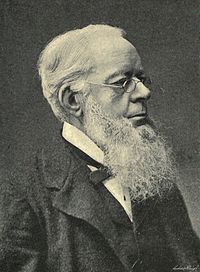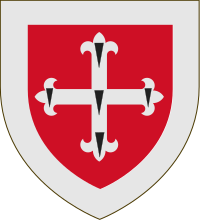R. A. Cross, 1st Viscount Cross
The Viscount Cross | |
|---|---|
 | |
| Lord Keeper of the Privy Seal | |
| In office 29 June 1895 – 12 November 1900 | |
| Prime Minister | The Marquess of Salisbury |
| Preceded by | The Lord Tweedmouth |
| Succeeded by | The Marquess of Salisbury |
| Chancellor of the Duchy of Lancaster | |
| In office 29 June 1895 – 4 July 1895 | |
| Prime Minister | The Marquess of Salisbury |
| Preceded by | The Lord Tweedmouth |
| Succeeded by | The Lord James of Hereford |
| Secretary of State for India | |
| In office 3 August 1886 – 11 August 1892 | |
| Prime Minister | The Marquess of Salisbury |
| Preceded by | The Earl of Kimberley |
| Succeeded by | The Earl of Kimberley |
| Secretary of State for the Home Department | |
| In office 24 June 1885 – 1 February 1886 | |
| Prime Minister | The Marquess of Salisbury |
| Preceded by | Sir William Harcourt |
| Succeeded by | Hugh Childers |
| In office 21 February 1874 – 23 April 1880 | |
| Prime Minister | Benjamin Disraeli |
| Preceded by | Robert Lowe |
| Succeeded by | Sir William Harcourt |
| Member of the House of Lords Lord Temporal | |
| In office 19 August 1886 – 8 January 1914 Hereditary peerage | |
| Preceded by | Peerage created |
| Succeeded by | The 2nd Viscount Cross |
| Member of Parliament for Newton | |
| In office 18 December 1885 – 19 August 1886 | |
| Preceded by | Constituency created |
| Succeeded by | Thomas Legh |
| Member of Parliament for South West Lancashire | |
| In office 7 December 1868 – 18 December 1885 Serving with Charles Turner and John Ireland Blackburne | |
| Preceded by | Constituency created |
| Succeeded by | Constituency abolished |
| Member of Parliament for Preston | |
| In office 24 April 1857 – 4 April 1862 Serving with Charles Grenfell | |
| Preceded by | Sir George Strickland, 7th Baronet |
| Succeeded by | Sir Thomas Fermor-Hesketh |
| Personal details | |
| Born | 30 May 1823 Red Scar, Lancashire |
| Died | 8 January 1914 (aged 90) |
| Nationality | British |
| Political party | Conservative |
| Spouse | Georgiana Lyon (d. 1907) |
| Alma mater | University of Cambridge |
Richard Assheton Cross, 1st Viscount Cross, GCB, GCSI, PC, FRS, DL (30 May 1823 – 8 January 1914), known before his elevation to the peerage as R. A. Cross, was a British Conservative politician. He was Home Secretary from 1874 to 1880, and from 1885 to 1886.
Background and education
Cross was born in Red Scar, near Preston, Lancashire, the fifth child and third son of William Cross JP (1771–1827), Deputy Prothonotary for the Court of Common Pleas at Lancaster and landed proprietor, and his wife Ellen, daughter of Edward Chaffers. He was educated at Rugby School, matriculated at Trinity College, Cambridge in 1842 where he graduated B.A. in 1846, and was the President of the Cambridge Union in 1845. He was admitted to Lincoln's Inn in 1844, and was called to the Bar at the Inner Temple in 1849, attaching himself to the Northern Circuit.[1][2]
Political career

Cross entered Parliament as one of two representatives for Preston in 1857, a seat he held until 1862.[3]
In 1868 Cross was elected for South West Lancashire, topping the poll and defeating Gladstone, and continued to represent this constituency until 1885.[3] He then briefly represented Newton,[3] until his elevation to the peerage in 1886.[4]
Cross was Home Secretary in Disraeli's second government (1874–1880), to which post he had been appointed without first holding junior office. He was again Home Secretary in Lord Salisbury's first government (1885–1886).
In 1886 Cross was raised to the peerage, as Viscount Cross of Broughton-in-Furness in the County Palatine of Lancaster,[5] He was moved over to the India Office (1886–1892), where he oversaw the passage of the Indian Councils Act 1892. He was very briefly Chancellor of the Duchy of Lancaster in Salisbury's third government (1895–1902) before being elevated to the sinecure post Lord Privy Seal. In 1898 he chaired the Joint Select Committee on Electrical Energy (Generating Stations and Supply), which recommended granting compulsory purchase powers for the building of power stations. He retired in 1900.
Business interests
After the death of his father-in-law Thomas Lyon (the younger) in 1859, Cross was involved in the affairs of Parr's Bank, of which Thomas Lyon the elder, uncle of the younger Thomas Lyon, was a founder.[2][6][7] He became a partner, and dropped out of Parliament for six years. He was one of the group who changed the bank into a joint stock company in 1865, of which he acted as deputy chairman. He became its chairman in 1870.[2][7]
In 1884, Cross was elected to the Board of the Manchester, Sheffield and Lincolnshire Railway,[8] and he remained a Director of that company, and of its successor the Great Central Railway (GCR), until his death.[9] During Board meetings, he would occasionally murmur "Where is the money to come from?"[10] In June 1909, when he was senior Director of the GCR, that railway named one of its class 8D express passenger locomotives The Rt. Hon. Viscount Cross G.C.B., G.C.S.I. in his honour.[11][12]
Family
Cross married Georgiana, daughter of Thomas Lyon of Appleton Hall, in 1852; they had three daughters and four sons.[2] The eldest son, the Hon. William Cross, represented Liverpool West Derby in Parliament. The second son, Thomas Richard Cross, died young in 1873;[13] Charles Francis Cross, the third son, was a cleric;[14] and John Edward Cross, the fourth son, was a land agent.[15]
Lady Cross died in January 1907. Lord Cross survived her by seven years and died in January 1914, aged 90. He was succeeded in the viscountcy by his grandson, Richard Assheton Cross, the only son of the Honourable William Cross.
Arms
  |
|
References
- ^ "Cross, Richard Assheton (CRS842RA)". A Cambridge Alumni Database. University of Cambridge.
- ^ a b c d Smith, Paul. "Cross, Richard Assheton, first Viscount Cross (1823–1914)". Oxford Dictionary of National Biography (online ed.). Oxford University Press. doi:10.1093/ref:odnb/32644. (Subscription or UK public library membership required.)
- ^ a b c Debrett's House of Commons. London: Dean. 1886.
- ^ Foster, Joseph (1888–1892). . Alumni Oxonienses: the Members of the University of Oxford, 1715–1886. Oxford: Parker and Co – via Wikisource.
- ^ "No. 25618". The London Gazette. 20 August 1886. p. 4080.
- ^ Burke, Bernard (1863). A Genealogical and Heraldic Dictionary of the Landed Gentry of Great Britain and Ireland. Harrison. p. 919.
- ^ a b Hewitt, Michael (5 June 2014). A Most Remarkable Family. Author House. p. 171. ISBN 978-1-4969-7786-1.
- ^ Dow, George (1962). Great Central, Volume Two: Dominion of Watkin, 1864–1899. Shepperton: Ian Allan. pp. 195, 351. ISBN 0-7110-1469-8.
- ^ Dow, George (1965). Great Central, Volume Three: Fay Sets the Pace, 1900–1922. Shepperton: Ian Allan. pp. 229, 356. ISBN 0-7110-0263-0.
- ^ Dow 1965, p. 28
- ^ Dow 1965, p. 133
- ^ Boddy, M. G.; Brown, W. A.; Fry, E. V.; Hennigan, W.; Hoole, Ken; Manners, F.; Neve, E.; Platt, E. N. T.; Russell, O.; Yeadon, W. B. (November 1979). Fry, E. V. (ed.). Locomotives of the L.N.E.R., Part 3A: Tender Engines—Classes C1 to C11. Kenilworth: RCTS. p. 87. ISBN 0-901115-45-2.
- ^ "Cross, Thomas Richard (CRS872TR)". A Cambridge Alumni Database. University of Cambridge.
- ^ "Cross, Charles Francis (CRS879CF)". A Cambridge Alumni Database. University of Cambridge.
- ^ "Cross, John Edward (CRS877JE)". A Cambridge Alumni Database. University of Cambridge.
- ^ "Cross, Viscount (UK, 1886 - 2004)".
Sources
- BOPCRIS database entry on Cross Committee (archived)
- "Archival material relating to R. A. Cross, 1st Viscount Cross". UK National Archives.


